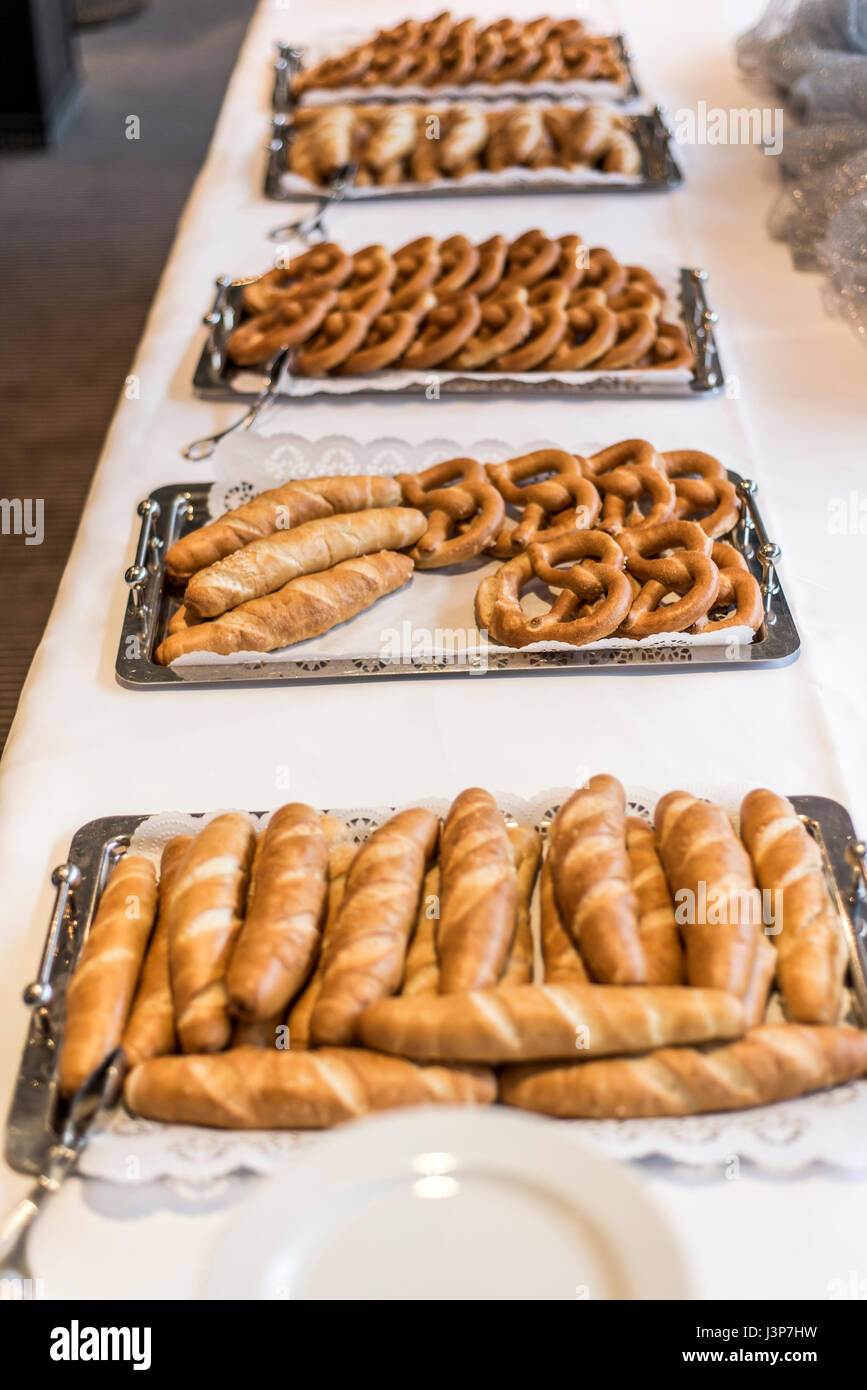Understanding the Art of Bakery Products: From Newly Baked Breads to Tempting Pastries and Finger Foods
The intricate art of pastry shop items encompasses a spectrum of methods and active ingredients that transform basic elements into cooking delights. From the scientific research behind the excellent loaf of bread, where fermentation and gluten development play pivotal functions, to the finesse required for producing split breads, each aspect discloses a compelling narrative of workmanship. Furthermore, the flexibility of finger foods illustrates exactly how flavor and texture can be skillfully integrated to involve varied taste preferences. As we check out these elements, one might question: what underlying principles control the success of these precious developments?
The Science of Bread Making
At the heart of every loaf of bread exists a remarkable interplay of chemistry and biology. The process of bread making begins with the combination of flour, water, salt, and yeast-- each ingredient playing a critical duty in the final product.
Yeast, a living organism, ferments the sugars present in the flour, creating co2 and alcohol in the process. The carbon dioxide gas creates bubbles in the dough, creating it to climb and create a light texture. The temperature and moisture throughout fermentation considerably affect yeast task and, subsequently, the bread's taste and texture.

Mastering Bread Techniques
How can one attain the fragile equilibrium of structure and taste that specifies phenomenal pastry? Mastering pastry strategies requires a deep understanding of active ingredients, techniques, and the scientific research behind them. Basic to this craft is the choice of top quality components-- flour, butter, sugar, and eggs-- each playing a vital function in the final product's flavor and texture.
The technique of lamination, which entails folding layers of dough and butter, develops the preferred flakiness in pastries like croissants and smoke pastry. Accuracy in temperature level is crucial, as butter should stay cool to make sure optimum layers. Likewise, correct blending approaches, such as the creaming strategy for cakes, make certain even unification of air and fat, causing a light and ventilated crumb.
Furthermore, maintaining the best moisture levels during cooking can dramatically affect the end result, ensuring that breads rise correctly and attain that golden-brown finish. Ultimately, the art of pastry likewise demands perseverance and technique; each effort boosts one's ability and understanding of the elaborate balance needed to create alluring pastries that thrill the senses. Mastery in these techniques ultimately identifies a knowledgeable bread cook from an amateur.
Sorts Of Finger Foods
The world of cooking delights prolongs beyond breads to encompass a large selection of finger foods, which are celebrated for their benefit and flexibility. These anonymous bite-sized treats are excellent for social celebrations, supplying a range of flavors and structures that satisfy diverse tastes buds.

On the sweeter side, bite-sized cupcakes and small tarts offer a wonderful surface to any dish, appealing to those with a sweet tooth. Moreover, cheese and charcuterie boards work as an innovative selection, permitting visitors to customize their attacks with an assortment of meats, cheeses, nuts, and fruits.
Flavor Profiles in Baking
Cooking is a complex dance of flavor accounts that integrates sweet, tasty, and umami notes to create an unified experience for the taste buds. Comprehending these profiles is essential for bakers looking for to raise their creations.
Ingredients such as delicious chocolate and caramel present complicated pleasant notes that can either dominate or complement various other tastes. Components like natural herbs, flavors, and cheeses can change a simple dough right into a complex flavor experience.
Umami, often overlooked in baking, plays a substantial role in enhancing flavors. Components such as aged cheeses, fermented items, and even specific nuts add to a tasty deepness that boosts overall preference.
In addition, the interplay of acidity from active ingredients like buttermilk or citrus zest can brighten tastes, supplying a refreshing counterpoint to sweetness. By attentively combining these flavor profiles, bakers can craft items that reverberate with diverse palates, producing an unforgettable culinary experience. Eventually, understanding taste accounts is essential to advancement i was reading this worldwide of baking.
Vital Cooking Devices and Active Ingredients
Recognizing flavor accounts in cooking sets the stage for picking the right tools and components that help with the development of extraordinary baked goods. A dependable set of cooking frying pans-- such as sheet pans, loaf frying pans, and cake frying pans-- is important for accomplishing desired forms and appearances.
In regards to components, quality issues substantially. Flour works as the foundation of the majority of recipes; choosing the appropriate type-- be it all-purpose, bread, or bread flour-- can substantially affect the outcome. Sugar not just sweetens but additionally contributes to texture, while eggs function as binders and leavening representatives. Baking powder and cooking soda are crucial for producing lift in cakes and pastries.
Additionally, integrating taste enhancers like vanilla essence, spices, and citrus passion can boost your creations. By making sure accessibility to these fundamental devices and active ingredients, bakers can confidently begin on their cooking trip, crafting a diverse variety of fascinating baked goods.
Final Thought
Mastery in bread production, bread prep work, and finger food discussion exposes the complex relationships in between procedures and ingredients. Catering Maddington. Exploring varied flavor profiles enriches the baking experience, while vital devices and components supply the foundation for success.
Exactly how can one accomplish the fragile balance of texture and flavor that specifies remarkable bread? Basic to this craft is the selection of premium active ingredients-- flour, butter, sugar, and eggs-- each playing an important function in the last item's taste and appearance.

Understanding flavor profiles in baking sets the phase for choosing the right devices and active ingredients that facilitate the creation of extraordinary baked products. Checking out varied taste accounts enhances the baking experience, while necessary devices and active ingredients you can check here give the structure for success.